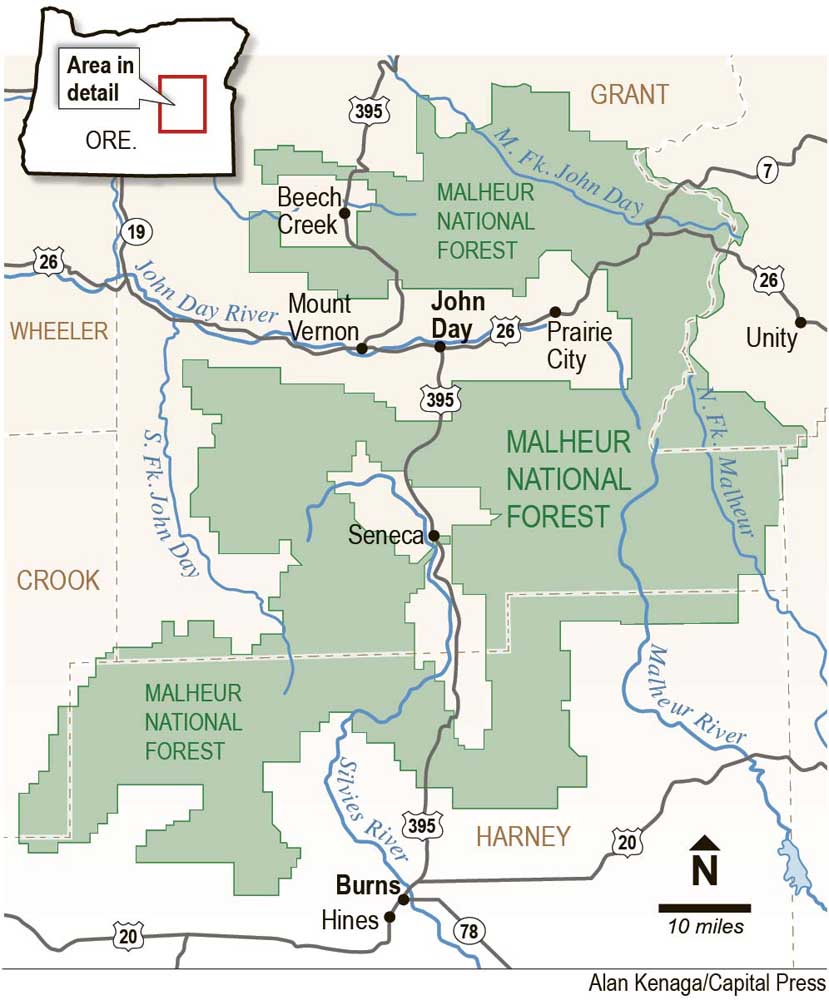Lawsuit targets 40,000-acre Camp Lick Project on Malheur forest
Published 12:15 pm Wednesday, August 4, 2021

- Malheur National Forest
An environmental lawsuit seeks to halt a 40,000-acre forest treatment project in the Malheur National Forest for allegedly evading federal limits on harvesting large trees.
The complaint, filed by the Blue Mountains Biodiversity Project, claims the Camp Lick Project violates the National Forest Management Act by permitting the removal of trees over 21 inches in diameter contrary to the “Eastside Screens” limit.
“The logging of large trees in projects such as Camp Lick is primarily driven by economic interests rather than true forest restoration,” the complaint said.
Within the project’s boundaries, the U.S. Forest Service plans to commercially harvest about 12,000 acres, largely using tractor yarding “where toppled trees are dragged through the forest by heavy equipment, causing soil compaction and erosion,” the plaintiff said. The Eastside Screens standard, which prohibited logging trees over 21 inches in diameter in several Eastern Oregon national forests, was replaced by new guidelines earlier this year but was still effective when the project was approved in 2020.
The environmental plaintiff argues the Eastside Screens were established to rectify the dearth of large trees east of the Cascade Mountains but “this shortage has not been resolved and continues to this day.”
The lawsuit alleges the Forest Service unlawfully made changes to the management plan for the Malheur National Forest to circumvent the Eastside Screens even though site-specific conditions did not justify the changes.
The broader changes to the Eastside Screens provide “compelling evidence” that exceptions to the size standard within the Camp Lick project weren’t warranted, the complaint said. “If the alleged need to remove large trees was site specific, a region-wide amendment would not be necessary.”
The complaint claims the Forest Service violated the National Environmental Policy Act in approving the project without conducting an “in depth analysis” of alternatives to the project or sufficiently evaluating its cumulative impacts, such as potential harms to steelhead and redband trout.
The agency didn’t properly take into account “on any consistent geographical scale” the effect that several other nearby projects will have on stream temperature, sediments and other factors, especially in light of future timber sales, the complaint said.
“The cumulative effects analysis of this section relies on assumption of good outcomes from past, present and future projects, rather than actual analysis of their effects,” according to the plaintiff.





